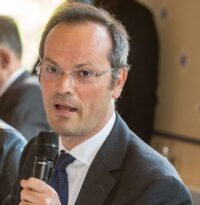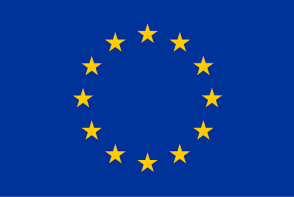Valentino Sevino holds a Degree in Architecture from the Politecnico di Milano and a Master’s Degree in Environmental Engineering (Politecnico di Torino, Ecole Polytecnique Federale de Lausanne and Université Savoie Mont Blanc – Chambéry). After ten years of experience in the field of mobility and environment at the European Commission, Metropolitana Milanese and AMAT too, he has been Director of Mobility Planning Area at AMAT (Environmental Mobility and Territory Agency, City of Milan) since 2008. His fields of work are: sustainable mobility (e-mobility, shared mobility), public transport planning and regulation, pedestrian areas, cycling mobility and parking regulations, smart city, and city logistics.
1. Can you tell us about AMAT and your role in the project?
AMAT is an in-house company owned by the Municipality of Milan which provides technical support to the municipal functions in the field of planning, programming, design, management, monitoring, and control relating to the development of the territory, urban planning, mobility and public transport, parking, road safety, water resources, circular economy, energy, and climate.
The role of AMAT in nuMIDAS is to participate into the formulation and development phases of two study cases focused on sharing mobility systems and test them in the city of Milan.
2. One of the nuMIDAS pilot cities is Milan, what do you consider are the main challenges the city is facing regarding mobility? Are there any interesting projects or initiatives which the city is developing or has developed?
Milan is one of the cities with the lowest rates of car usage in Italy, but one of the highest in respect to other metropolitan cities in Europe. The reduction of this fundamental KPI is a common challenge to many cities in Europe which poses complex environmental challenges.
This challenge is one that we think could be solved by offering diverse and good quality public transport services including sharing mobilities and encouraging multimodality among other strategies. More in detail, AMAT has implemented several projects addressed towards decreasing the private car usage and urban sustainability, one of the main ones are:
– Congestion charges to vehicles, restriction of circulations to polluting vehicles and investing the fare in public transport (Area B, Area C)
– Encouraging electric mobility (E-mob)
– Promoting cycling and sustainable means of transportation (Mobility 4 mi)
– Parking masterplan, smart parking
– Urban regeneration (Reinventing cities Milan)
– Monitoring the construction of the line M4 of the Metro
– Monitoring and managing sharing mobility services
3. In which ways is the nuMIDAS toolkit going to contribute?
The nuMIDAS toolkit regarding UC1 will help AMAT to improve the formulation process of tenders addressed to sharing mobility operators, in which it is in our interest to enhance the method in which the required fleet is calculated per mode. We expect to achieve a deep understanding of key indicators useful to design more comprehensive tenders of all sharing mobility services available in Milan and optimise the decision-making process.
The nuMIDAS toolkit related to UC2 will contribute by providing a decision support tool for defining which zones of the city will be served by which shared mobility mode and operator, in order to reach most of the citizens without incurring an economic loss for operators. This tool will help us to structure a supply distribution in an equitable manner. Such a tool should aid at planning the mobility of shared bikes, scooters, mopeds, and cars by maximising a sustainable level of service.
4. As a local government mobility agency, what are the main milestones you would want to achieve at a city level regarding the use of mobility data?
As AMAT we know how crucial it is to work closely using a data driven approach when working in sustainable transportation systems. The main milestones that we would like to achieve at the city level are the following:
– Raising awareness within the public administration and private sector about the importance of working with a data driven approach when working with mobility.
– Achieving the consolidation of technological tools such a visualisation boards and API managers in our data exchange with all mobility operators and the Municipality of Milan.
– Continue developing the expertise on how to automatize important processes within the planning, development, and monitoring phases of projects to increase the capacity and accuracy of response.





